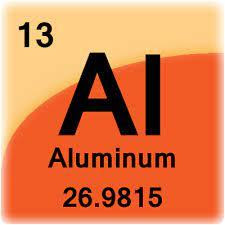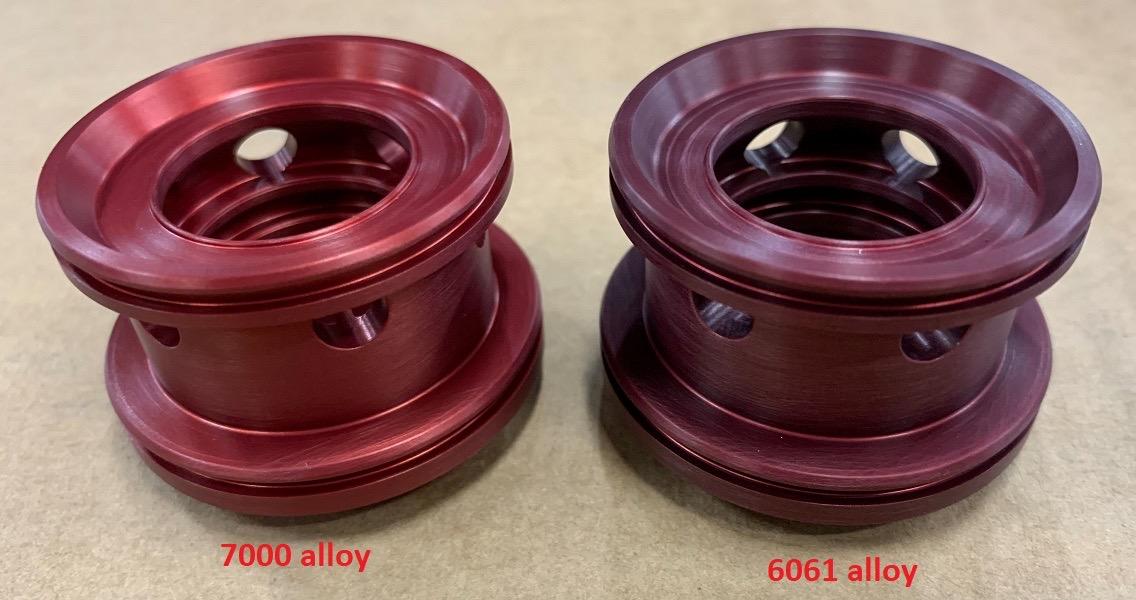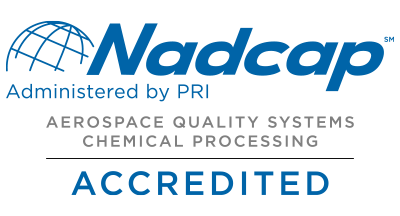| Aluminum is the 3rd most common element in the earth’s crust and the most abundant metal on earth. It’s no wonder that Anoplate sees a lot of aluminum for everything from to the gold plated connectors to hardcoat anodize on the infamous “scoop on Mars”. While most parts made from aluminum look similar, when it comes to chemical processing of them, whether it’s simple chemical film conversion coating or anodize or plating, it’s critical that we know just what specific aluminum alloy we’re dealing with. “It’s just aluminum” is seldom the case! |  |
When it comes to manufacturing, aluminum alloys are a wonder-material. Depending on the exact recipe, aluminum alloys can be formulated to stretch, bend, made more corrosion-resistant, have greater strength or any number of desirable physical properties. For example, aluminum cans typically use highly ductile 3104 for deep-drawing the can itself and 5182 alloy for stamping the ends. One of the best technical talks I ever attended was given by a metallurgist from Alcan’s Oswego plant, now Novelis, about the metallurgy of a aluminum beer can. Back then the lids had pull tabs and a high strength 7050 alloy rivet staking them closed. Ford claims their F-150 pickups utilize high-strength, military-grade 6000-series aluminum alloy for various body components to save on weight. 6000-series alloys contain magnesium and silicon as predominant alloying components. They provide excellent strength and exhibit high corrosion resistance, however, when it comes to the highest strength, 7000-series alloys used across the aerospace and motorsport industry standout. The most common of 7000-series aluminums is 7075 which owes its strength to alloying with zinc with a smaller amount of magnesium. Jet airframes are typically made from 7075 aluminum. Lastly, and most unpopular with metal finishers, the 2000-series such as 2024 which are heavily alloyed with copper. The copper gives these alloys much higher fatigue strength thus popular for such things as landing gear.
So what does all this have to do with chemical processing? Depending on the alloying makeup of the aluminum, the processing house has to switch the cleaning and deoxidation to achieve optimum results. For instance, using the same pretreatment for 5052 aluminum, the predominant sheet metal alloy, as 6061 will result in a great looking chemical conversion coating but when rubbed, it will come right off. Similarly, when anodized, different alloys and tempers will conduct electricity at different rates. The following photo shows two identical parts run at the same time but machined from different alloys. Yes, they’re both aluminum but the results dramatically different. When it comes to chemical processing, your anodizing or plating house has to know exactly which “just aluminum” is being used.


--
Aluminum alloys, Chemical processing of aluminum, Anodize and plating, Aluminum alloy properties, Metallurgy of aluminum, 6000-series aluminum alloys, 7000-series aluminum alloys, 7075 aluminum, 2000-series aluminum alloys, Chemical conversion coating for aluminum, Aluminum properties and uses, Aluminum manufacturing processes, Aluminum surface treatment methods, Anodizing aluminum benefits, Aluminum corrosion resistance, Aluminum surface finishing techniques, Aluminum surface coating options, Aluminum plating services, Aluminum surface engineering solutions, Aluminum surface treatment technologies













